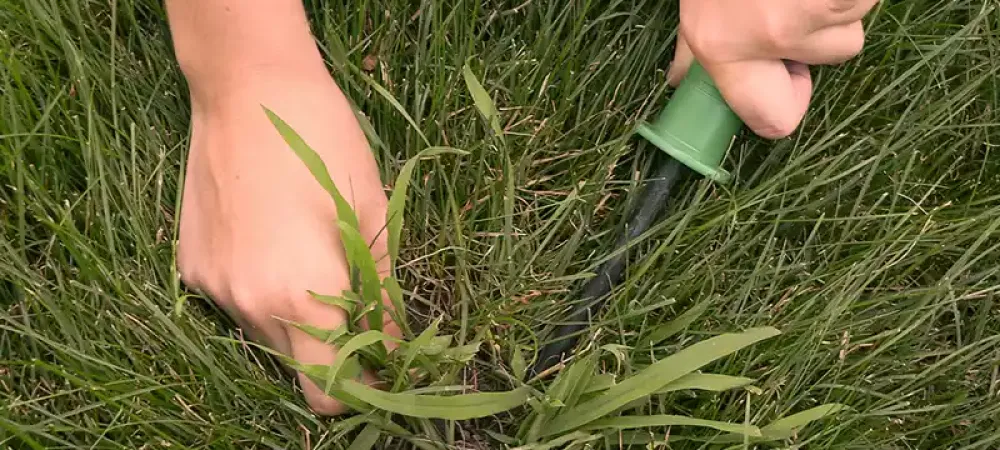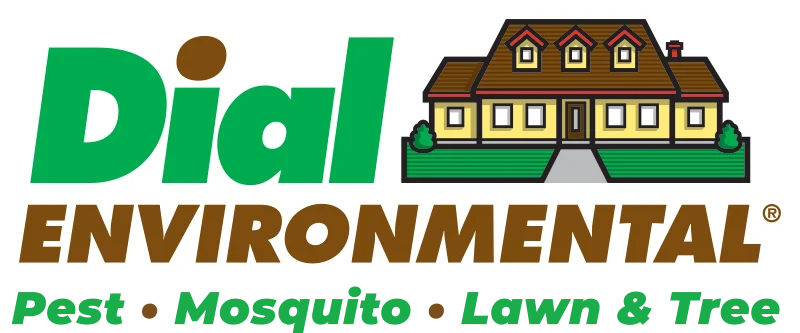Crabgrass Preventer: The Right Time For Treatment

Crabgrass is unsightly and can ruin the look of your otherwise well-manicured outdoor space. If you want to get rid of Crabgrass for good, you must take preventative measures at the right time of the year. Let’s take a look at your best chance of getting rid of Crabgrass for good with a Crabgrass preventer and treatment plan.
What is Crabgrass?
Crabgrass isn’t native to the United States but was originally introduced from Europe as a potential foraging grass. It loved its new environment, and now there are few spaces where you won’t find it growing.
It’s a summer annual, meaning the grass you see year to year isn’t the same plant. This is good news for eradication because you aren’t dealing with a stubborn root system or difficult spreading. It does require just the right timing, however, to get rid of it.
Once it’s established, it’s heat tolerant and hardy, often competing with your preferred grass and lawn covers for valuable nutrients from the soil. Prevention is the best method here, but it’s going to take some management to ensure that you’ve got the best chance possible.
Why Should I Get Rid of Crabgrass?
Crabgrass is an indeterminate grower. Although it’s an annual, as long as conditions are right, it will continue to produce seeds until the winter finally kills the plant. The seeds lay dormant until the weather improves, and you’ve got more than ever before.
Crabgrass can produce more than 150,000 seeds per plant. You may think that new plants are popping up from current seed cycles, but in reality, seeds wait until the following season to sprout. What you have is the result of seeds from past seasons finally germinating.
Once soil temperatures reach between 50 and 70 degrees, you have the right conditions for new crabgrass plants. Because of their hardy nature, they’ll quickly overtake everything in your yard…and your neighbor’s.
How To Get Rid Of Crabgrass
If you’re starting to kill Crabgrass, you’ve got a few steps ahead of you. The Crabgrass control plan is a combination of timing and good prevention.
Winter is the best place to start to prevent Crabgrass because seeds haven’t had the chance to germinate quite yet. Because few people are thinking about their landscaping while everything is dormant, spring is the next best time.
In early spring, when soil temperatures reach a consistent 50 or so degrees, applying a pre-emergent to your lawn can help inhibit seed growth before it ever becomes a problem. The first initial phase of crabgrass germination is when nighttime temperatures reach 50 plus degrees for three nights in a row, effectively waking up the seed. Once day time temperatures reach 60 and 70 degrees, it’s in full force.
The exact timing means your pre-emergent reaches its maximum potential. This treatment may continue for a few years until you’re satisfied with the results. During the summer and fall months, it’s essential to remove any plants before they go to seed and mow using a grass catcher to help further reduce the number of seeds.
Nurture Your Lawn
A healthy lawn can help crowd out seeds before they germinate. Reseed any bare spots as quickly as possible (nature hates a vacuum), and fertilize using methods other than high nitrogen, which causes Crabgrass to thrive. Other actions like aeration are also important.
Dial has eco-friendly lawn care expertise and can encourage the natural health of your lawn as a supplement to crabgrass treatments. Our knowledgeable staff and ISA certified arborists can provide you with the best possible chance at ensuring you eliminate your unsightly Crabgrass.
Because seeds can blow in from anywhere, ensuring your lawn is as healthy as possible helps keep your landscape as free of Crabgrass as possible and give you the best chance for that gorgeous lawn you love.
Dial serves Montclair NJ and Roseland NJ and is specially qualified to help with all your lawn care needs. Call us today to find out how we can transform your outdoor spaces.
